| SQUID Watch |
 |

SquidWatch

It isn't unusual to find squid eggs stranded on the beach. Although as they closely resemble large strings of mucus, we can just walk by without giving them a second glance.
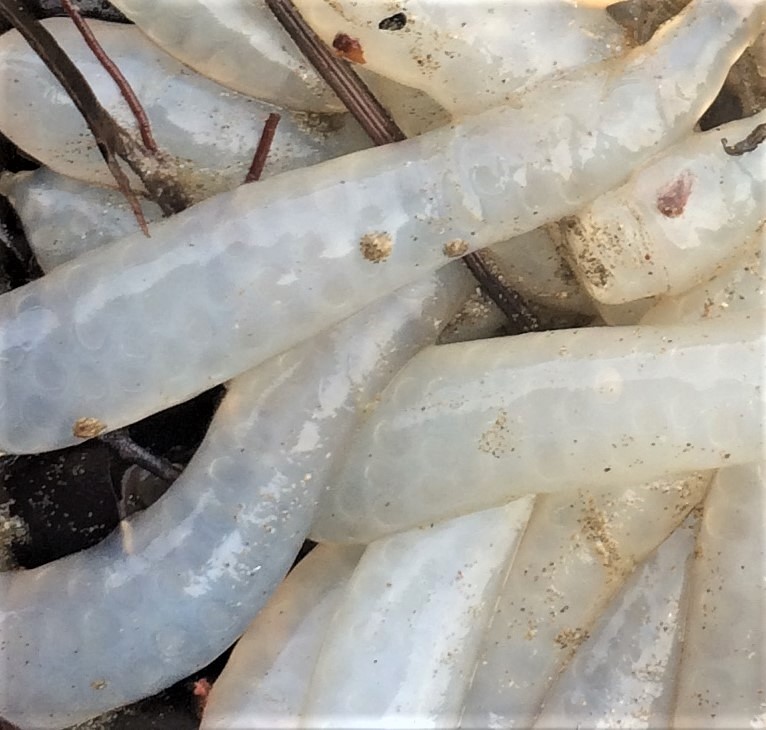
A closer look reveals that each string of eggs appears to have a structure and chambers within it.
The female squid can lay about 20,000 at a time and she attaches them securely to rocks or weeds. Stormy waters, however, can mean that they become detached. Once detached they can be damaged by being flung about in the water or end up beached on the sand. At this point, the squid have no chance of surviving.
From being laid, squid eggs can take around eight weeks to hatch.
Our eggs were found washed up on the beach on December 19th - we'll call this Day One although there was no knowing how old they actually were then.
| SquidWatch DAY 1 |
 |
I carried the entire clutch of eggs home in a bucket of sea water and then suspended them in an aquarium where they had an air stone and new sea water every day so as to replicate sea conditions as best I could.
And waited...
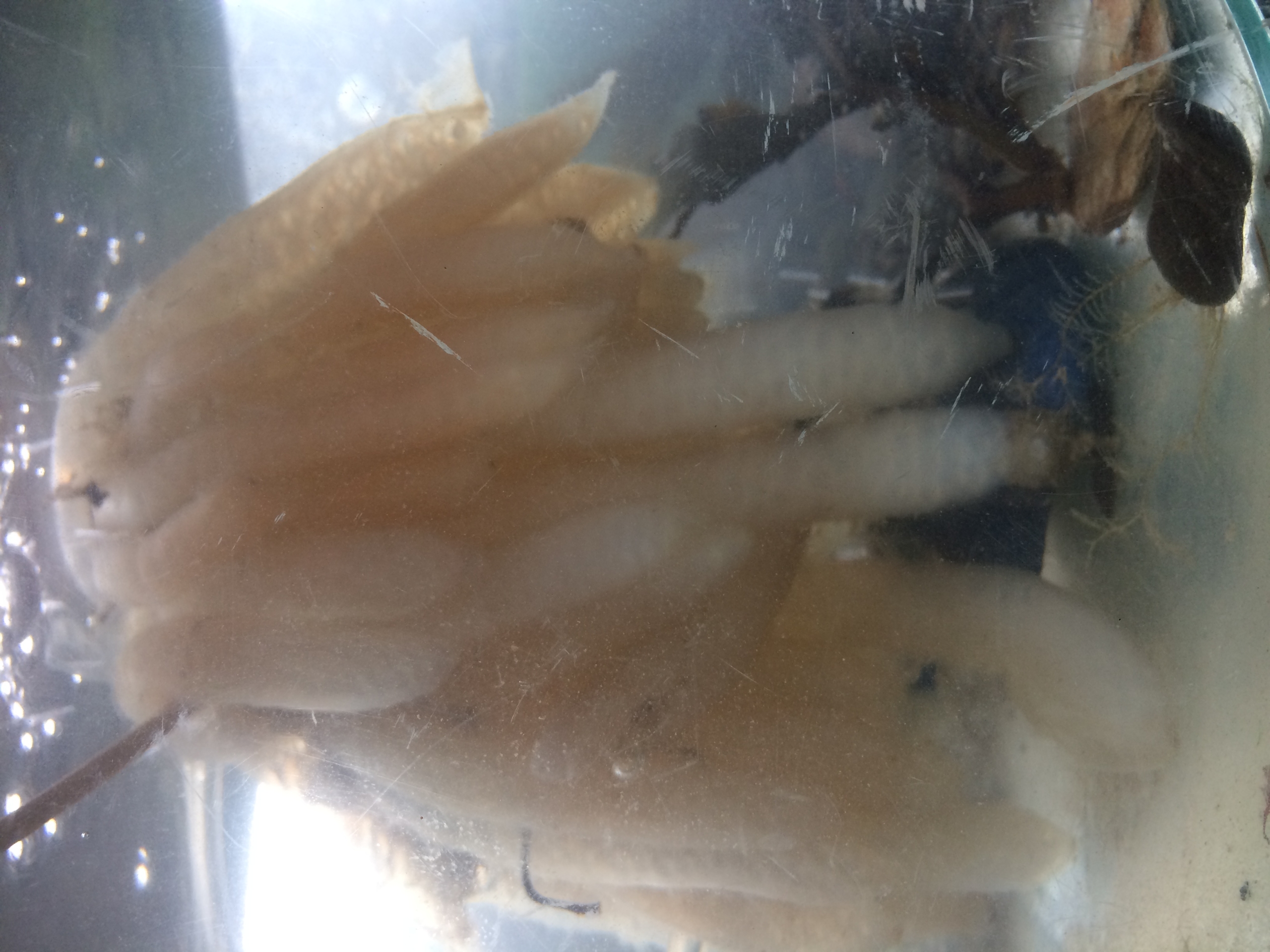
| SquidWatch DAY 15 |
 |
Eyes first appeared!
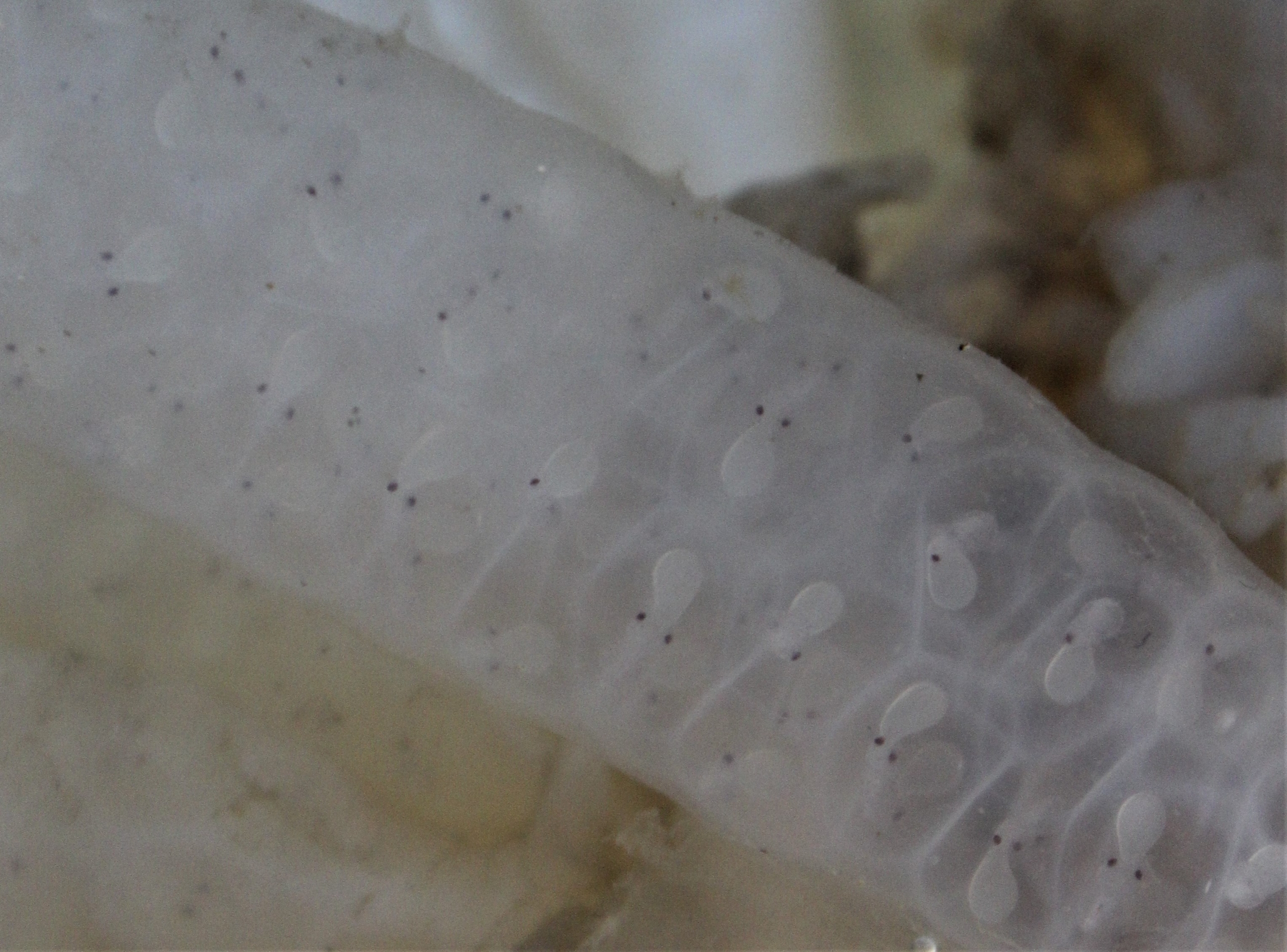
| SquidWatch DAY 19 |
 |
More and more pairs of eyes

| SquidWatch DAY 21 |
 |
It is possible to see a dark spot appear on the body of some of the squidlets - an ink spot.

| SquidWatch DAY 22 |
 |
The egg capsules under a microscope.

| SquidWatch DAY 22 |
 |
The first two hatchlings appeared!
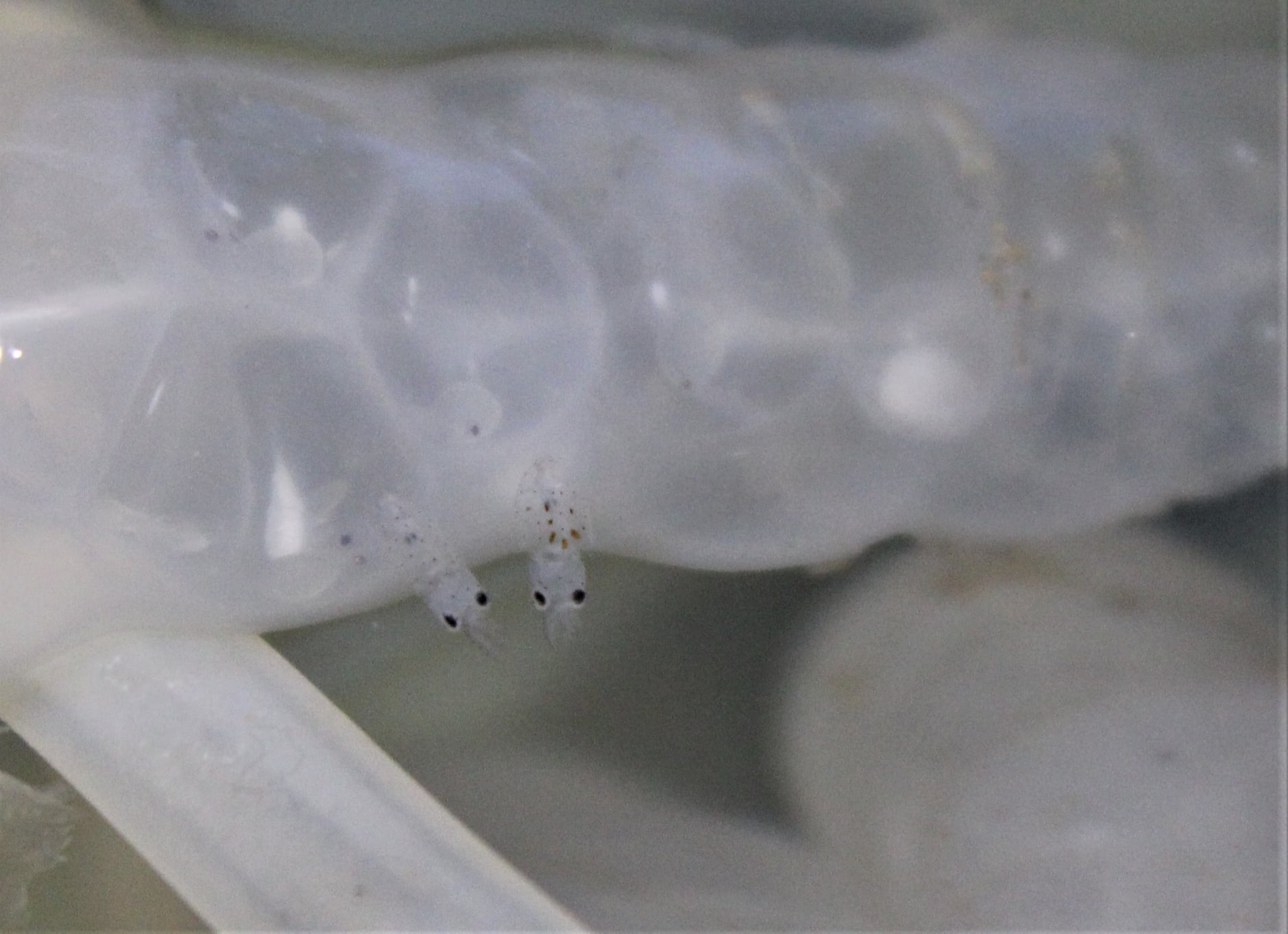
Overnight, a dozen squidlets hatched. Following expert advice, I took these straight to the sea as it would have been impossible to keep them fed in my small aquarium (they eat lots of plankton).
| SquidWatch DAY 24 |
 |

| SquidWatch DAY 25 |
 |
Every morning from Day 25 to Day 35 there hundreds of hatchlings that had emerged overnight. Every day, they all went into the sea hopefully getting the same chance that they would have had if their eggs had stayed attached in the sea.
| SquidWatch DAY 27 |
 |
In the morning, it was noticeable that the new hatchlings spent time lying on or swimming close to the eggs. Did the eggs provide nourishment or shelter perhaps?

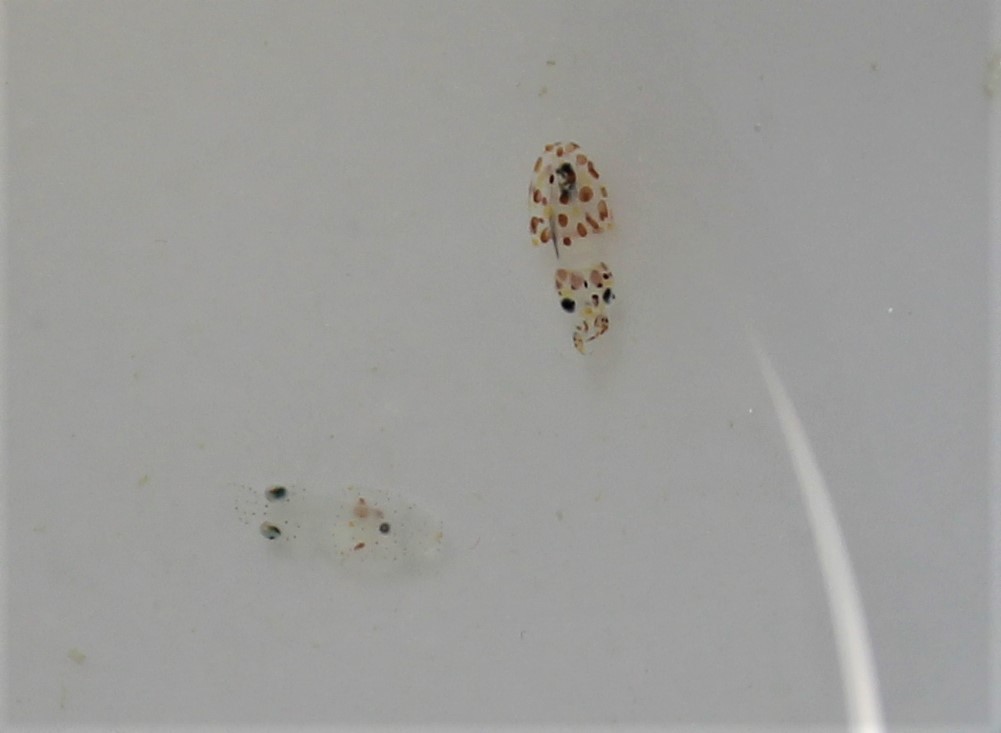
| SquidWatch DAY 34 |
 |
One of the egg capsules became detached from its string of eggs. The tiny squidlet could still be seen inside.

| SquidWatch DAY 35 |
 |
By chance, I happened to catch one of the squidlets - only a few hours old - squirting out ink after a close encounter with another squidlet.
On some of the squidlets it was possible to see ink 'leaking out'.
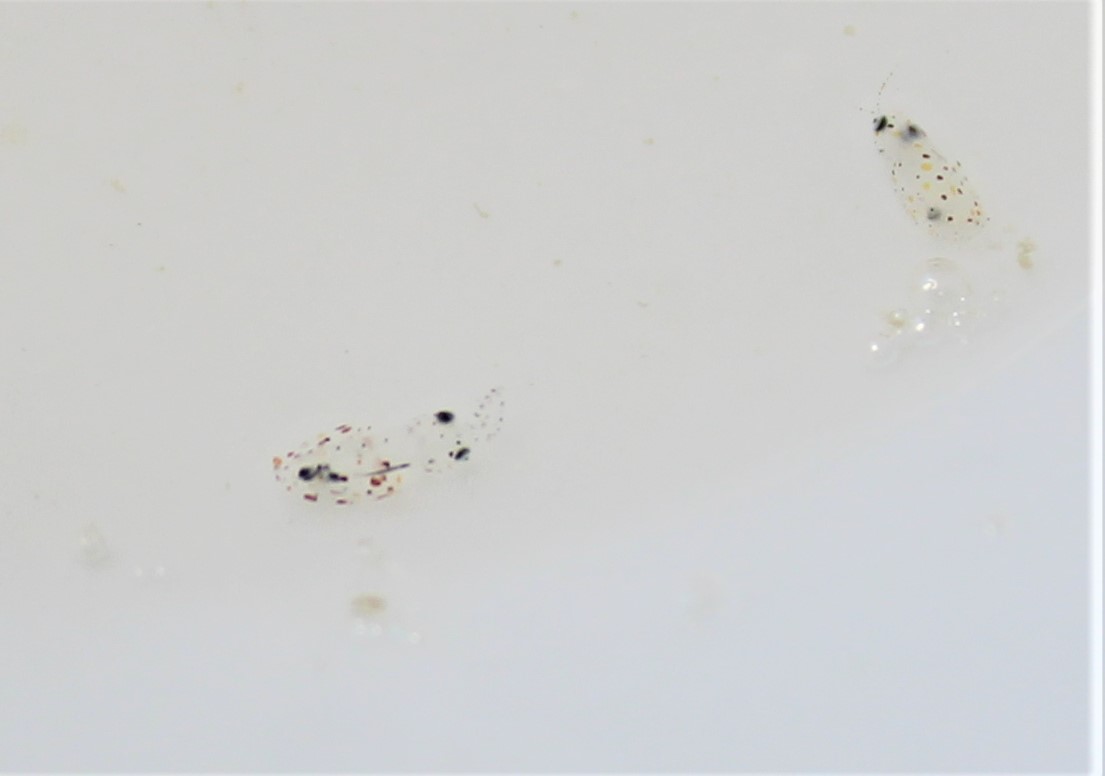
| SquidWatch DAY 36 |
 |
After seeing hundreds of new squidlets on each of the past ten days, it was strange to see only 23 (it may have been 25, they are very difficult to count!) new squidlets that morning.

| SquidWatch DAY 37 |
 |
On the morning of Day 37, there were ony three new squidlets.

Each squidlet is about 5mm long.

| SquidWatch DAY 38 |
 |
There were no new squidlets on Day 38 or on any morning afterwards.
In total there were 15 nights of hatching from the single clutch of eggs.
One of the SquidWatch squidlets under a microscope. I do have to confess at this point that I made up the word 'squidlet' these hatchlings are actually known as paralarvae - which just isn't appealing as a word...

A juvenile squid found washed up on the beach.
The common squid (Loligo vulgaris), is remarkably common around the UK although most of us don't get to see them them unless we are divers.
They grow to around 20cm long (longer in warmer waters) and can live for two or three years. The male does not usually live long after mating.

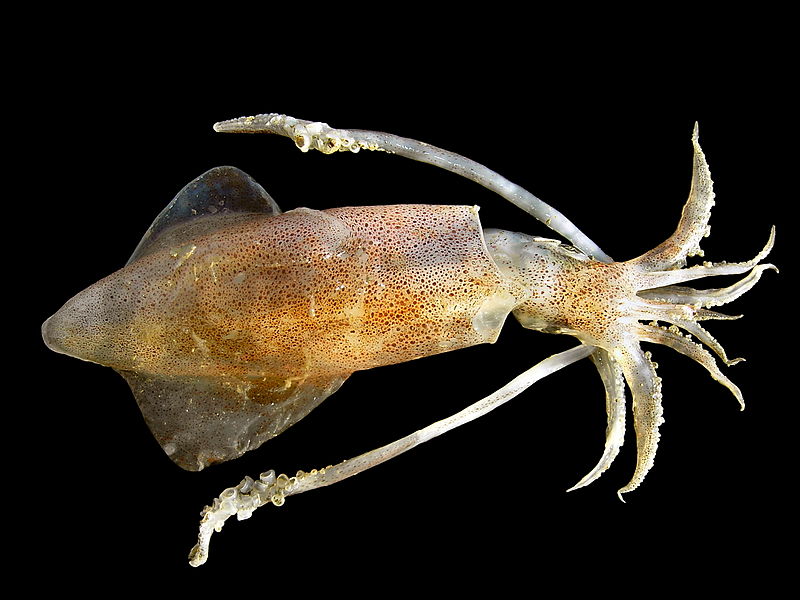
Source WikiCommons, This file is licensed under the Creative Commons Attribution-Share Alike 4.0 International license. Attribution: © Hans Hillewaert
For more on squid, octopus and cuttlefish (aka cephalopods), please click above.
For more on eggs found on beaches and in rockpools, please click below.

























